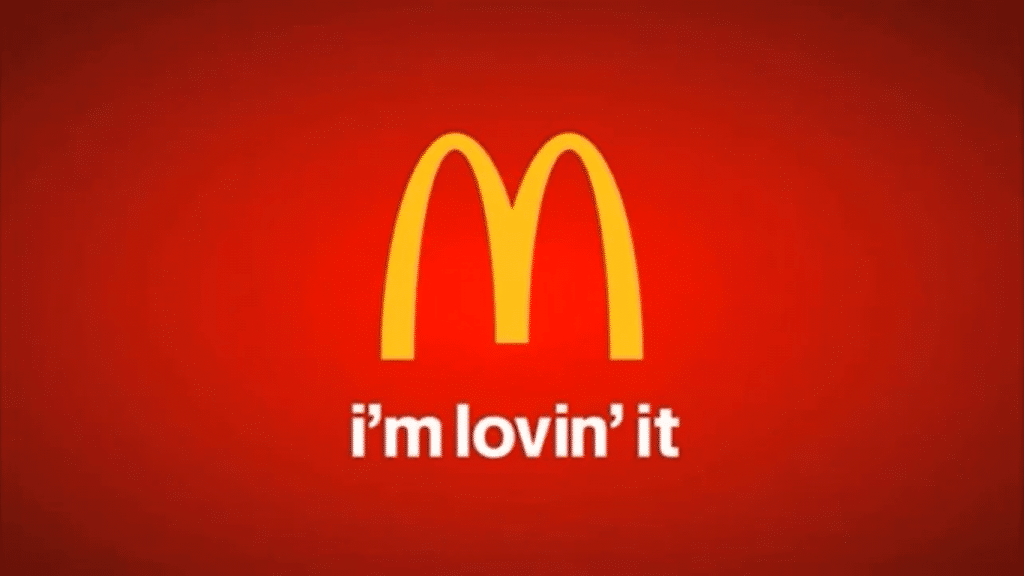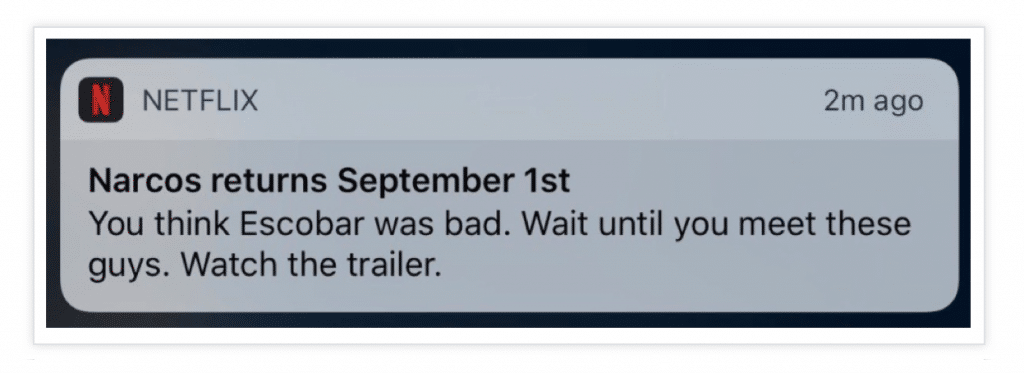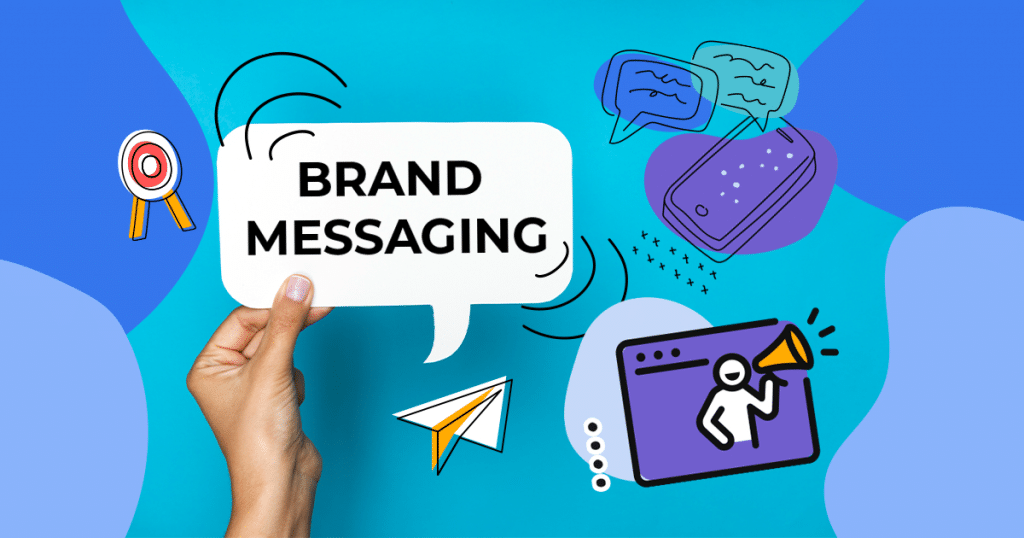Branding is part of the survival of any business on the market. Every company must know what it will communicate to its audience since this will shape people’s perceptions of the company.
The effort to develop and implement a communication pattern is called brand messaging, and it can create a standardized way of conveying the brand’s values to the public.
Whether in online advertising or TV ads, companies need to convey a single idea even if the message used in each broadcast is different. Consumers are looking for stronger relationships with brands, and this also depends on communication.
Through brand messaging, it’s possible to transmit values, inspire, and generate the desire to buy. We will talk more about this concept in this content. To detail the subject, we will cover the following topics:
- What is Brand Messaging?
- How to Create a Successful Brand Messaging Framework?
- The Best Examples of Brand Messaging
- Dove
- Apple
- Redbull
- Volkswagen
- L’Oréal
- Protein Works
- GoPro
- Jetblue
- Uniqlo
- Dollar Shave Club (DSC)
- Brand Messaging FAQs (Frequently Asked Questions)
- Final Words
What is Brand Messaging?
Brand messaging refers to the definition of the tone of voice, the line of communication, and the main messages that a brand establishes when communicating with its audience.
Determining this standard is crucial so that every time the company positions itself, the public can easily perceive its identity. That is only possible with a thorough definition of ideas, always based on values.
The brand’s proposal to the public is what will influence the message conveyed. Therefore, the company’s segment, the products it sells, and the services it provides will have a direct impact on brand messaging.
By structuring this message content pattern, companies can convey what it is that the brand wants and what its core values are.
Slogans are a good example
A slogan is a catchy phrase that is repeated over and over again in advertising pieces and campaigns. Every brand has one.
That resource is part of a brand messaging strategy, and its role is, directly and succinctly, to generate an immediate idea about what the brand can offer to the public.

The brand’s personality, its market, and its line of communication shape the slogan. Some other famous slogans are:
- Nike – Just do it.
- AT&T – Your world delivered. Connecting you to your world, everywhere you live and work.
- Tylenol – Feel better, Tylenol.
- Red Bull – Red Bull gives you wiiings.
Slogans are mechanisms of immediate association with brands. But they are not necessarily the only way to transmit values and offers through communication.
Brand messaging is a combination of factors, such as language, specific terms, and the tone of voice used every time a company communicates.
It’s precisely the repetition or standardization that will create an identity for each brand. That makes the communication effective not only to the target audience but to anyone who comes across the message.
Download this post by entering your email below
How to Create a Successful Brand Messaging Framework?
Defining the brand message is a process that demands in-house, audience, and market analysis. Many factors impact the way companies position themselves and determine their form of communication. Taking care of all these points ensures a more precise strategy.
Below, you will read about all the necessary phases for your brand messaging framework!
1. Identify your audiences
Who is your company talking to, exactly? The audience is the initial question when it comes to defining your brand message.
That is a process that will influence people’s perception of your company, but it’s also an engagement strategy that will often trigger the desire for consumption. It’s much easier to achieve this among the brand’s audience.
Therefore, a well-defined persona is the first step. Some companies already know their brand’s average consumer profile. But if this is not the case, it’s essential to conduct research on preferences, analyze buying behavior, and understand these people’s expectations.
From this, the persona model will be aligned with the company’s reality.
An important point when understanding audiences is to know that, in each segment, there is an audience. A company that sells sports equipment does not talk to the same public as a sofa cleaning company.
This variation has a significant impact on the brand’s tone of voice, the choice of terms, and generally on the style of communication to be used.
2. Look for references
Learning from success cases is always a good idea when developing your company’s brand messaging. It’s not about copying an approach and reproducing it for your brand but looking for solid references that make sense for your business.
Of course, the best thing to do is observe and analyze the companies’ brand message in your industry.
Many large companies invest heavily in maintaining this standardization of message content in their communication strategies.
Thus, it’s easy to identify what resources and mechanisms they use to convey their value in ads, social media interactions, and other opportunities. Ideally, you should conduct a broader study with several examples.
If your company is in the media and entertainment industry, a success story is Netflix.
Famous for its younger, cooler, and closer-to-the-public language, the brand manages to maintain this in almost every interaction and promotion. References will always be useful to help you understand how your company can structure brand message patterns.

Push notifications to announce the new season of “Narcos” bring an objective description of what the subscriber can expect.
3. Observe market trends
The market always brings good trends that can be of great help to your brand. However, you should not see these practices as opportunities to change and lead to an escape from the company’s values.
It’s not because Netflix has a younger communication style that your law firm can do the same. They have different audiences with different expectations.
Still, trends are essential to understand how brand messaging has evolved. Communication is an industry that reflects changes in society, values, and technology, which makes it a true laboratory of practices.
Trends are not limited to language but also include the ways of applying the brand messages in campaigns.
A good idea is to perform this analysis through social media channels. It’s important to understand how companies have used these platforms to convey their values.
It’s much more about understanding how it has been done rather than exactly what style is used.
4. Have a value proposition
The value proposition will be the basis of your communication strategy. What your company does, offers as a brand, and intends to bring to the market make up this concept, which should always be very solid.
That will be the starting point for a concise brand messaging plan that will generate the intended impact. Each company has its value proposition.
For example, a digital solutions company has as its value the delivery of software based on innovation. In this case, it will reinforce that every time it sells a product, engages with consumers, or simply advertises and executes basic marketing strategies.
Every company needs to be true to its value proposition to have a solid and effective brand message.
After identifying your audience and the market, the value proposition is the starting point to determine what exactly the company will bring to the public.
It doesn’t matter if the idea is innovation, sustainability, practicality, or low cost – the value that the brand holds will be your guide when it comes to defining the tone of voice, choice of terms, and general communication approach.
5. Define terms that will be used
An important mechanism for brand messaging is the choice of terms. Some are strategic and help brands transmit their value proposition more clearly, facilitating understanding.
In general, those are words, expressions, and phrases that refer to the company’s core business but always address the specific values that each company embraces.
At this stage, the company must already have its value proposition defined, which will allow it to know precisely what it will bring to the public. When it comes to determining the terms, it’s necessary to perform a simple reflection exercise on which words generate a quick association with what the company sells.
If we are talking about veganism, terms like “sustainability” will work out well and generate a strong connection with the brand. From this, it’s essential to build a true bank of terms, creating a solid standardization that will serve to guide all communication efforts.
It’s important, however, that this bank is extensive to guide various contents without being repetitive.
6. Define your brand’s tone of voice
The brand’s tone of voice is the final touch. It’s an essential part of branding that will guide the message delivery solidly.
If you already have your persona well-defined, have studied the market, and searched for references, you know exactly which paths you can follow when speaking to your audience. The tone of voice needs to be aligned with all those points.
This approach cannot fail to consider what the company sells and its values. It’s fundamental to understand that tone of voice is a mechanism that helps create a corporate personality when communicating.
Being fun, cool, serious, or creative are possibilities, as long as there is an alignment with the persona and the company’s value is prioritized.
With digital on the rise, companies have more significant channels to apply their brand messaging and, especially, to explore this tone of voice in a diversified manner. There are more opportunities to establish a brand’s personality, always considering the need to communicate clearly.
Once you get your tone and voice nailed down, you can quickly find the perfect writers with WriterAccess Talent Finder. Start for free and get matched with a freelancer fit for the job!
7. Establish communication guidelines
Communication guidelines are a great help for the company to set an important standard that upholds compliance to essential issues, such as:
- prohibited terms;
- recommended terms;
- the tone of voice;
- how to refer to the public;
- value to be applied;
- length of text;
- pronunciation of product names;
- the spelling of product names.
Precision is one of the fundamental factors in brand messaging. It’s what will ensure that the brand manages to maintain consistency in communication. As a result, it’s easier to create an approach style, which will generate faster identification with the public.
To facilitate the task, the company should create a brand message guide. That is a common mechanism in marketing, just like the brand manual. But it will be focused only on brand messaging.
The Best Examples of Brand Messaging
Some brands have been showing how it is done in a didactic and high-quality way. They are great sources of inspiration for your company to implement qualified brand messaging. You may want to think about the value proposition and the delivery of precise communication.
Get to know which paths these companies have followed.
Dove
Dove has stood out for its more sensitive, humanized, and closer approach to the public. The tone of voice is softer and milder but not so cheerful. Their message is that their products are not only for beauty but a source of confidence.
The sensitivity that the brand applies in its campaigns allows it to work with brand messaging that reinforces the importance of believing in yourself.

Apple
Apple’s brand message is quite clear: its products deliver sophisticated, minimalist designs, innovative technology, and enhanced value.
The company’s consumers are nearly a fan club and fully understand the impact that the products have on their lifestyle. That is exactly what the company explores.
Its campaigns feature succinct messages, using direct but not too casual language. The focus is on aligning simple descriptions of features and functionality, illustrating how all this impacts the user’s day-to-day life.

Redbull
It takes genius content strategy and luck to go viral, and this is one of those digital marketing examples we simply had to share. However, Red Bull has managed to consistently capture viral moments and turn them into content, relying on users’ hunger for the thrill.
Satisfying this thrill is critical to how widespread a piece of content can be. This is where Red Bull excels — understanding that satisfying humans’ curiosity can be piqued with standout content.
You can see this in full display with the Red Bull Stratos video, where Felix Baumgartner was broadcast live, jumping from the edge of space.
This video depicted Red Bull’s slogan, “Red Bull gives you wings,” without outrightly selling throughout the video. It became an instant success with over 6.8 million views on the energy drink’s official YouTube channel.
Sometimes people are tired of being sold to; they just want a story interesting enough to share with their loved ones. So why not tell your story differently?

Volkswagen
Volkswagen’s The Last Mile campaign was a farewell to the Beetle lineup, reinstating the shift to electric automobiles.
The entire video is centered around nostalgia. A boy grows up falling in love with his father’s Beetle and shares key milestones in his life with the iconic vehicle.
As the story continues, you can hear a children’s choir rendition of The Beatles’ classic tune “Let It Be.” The ad establishes an emotional connection with the audience and shows the diehard fans of the Beetle that it is just as painful to discontinue the vehicle lineup.
Don’t be afraid of change. Utilize nostalgia to keep the old fans interested in where you are going with your new audience.

L’Oréal
The thought of trying out multiple wears at the clothing store to find your perfect fit can be discouraging. Trying out cosmetics is a bit more delicate, especially when boasting a makeup lineup as extensive as L’Oréal’s.
Makeup lovers care more about the final look wearing makeup gives them. Using the Makeup Genius app and Magic Mirrors, L’Oréal users can now try out and compare hundreds of looks within seconds using their phones.
This shortens the time it takes to satisfy a customer and make sales.
Pushing the boundaries of innovation with your brand allows you to reach the point where only you can provide the value needed to make your customers happy.
Protein Works
Accepting that not everyone will know about your product regardless of how much you invest in ads is one of the first steps to crushing your sales goals.
Through its affiliate marketing program, Protein Works is reaching new audiences and making more sales. They bank on the trust prospects have in their affiliate marketers to generate the required buzz and traffic for their products.
Affiliate marketers are rewarded every time a sale is made using their coupon codes or referral links. The company opens its program to influencers and non-influencers because the degree of trust is not based on popularity alone.
Operate a more decentralized lead and sales channel. Interpersonal interactions are essential to establishing trust and creating a more lasting connection with your brand.
GoPro
Inspiring emotion in prospects in a way that they choose to become users of your products is one marketing strategy we all can learn from GoPro.
GoPro encourages users to share videos from their adventures and journeys. They are uploaded on the brand’s official YouTube channel. User-generated content shows other users and non-users that they don’t have to be professionals to produce stunning-looking visuals.
Because of this simple act of letting users tell their stories, YouTube is the brand’s social media with the most traffic.
Showcase everyday stories because the majority of your users are ordinary people. This will create more of a personal connection with your brand.

Jetblue
Focusing on customers’ needs as you grow can be challenging. Twitter is often utilized as a promotional space for brands’ services, and JetBlue found a way to incorporate customer service into it.
Only a few social media can be used to cater to the needs and complaints of your followers, especially when it is a large community. And JetBlue strikes a balance between promoting its products and services and attending to users.
Good customer service can never go out of style. As more companies make their complaints and self-service channels less human, you should find a way to make users welcome by taking a contrary approach.
Uniqlo
Ever asked yourself what you want your brand to be recognized for? You do not have to align with the traditional industry for the products you sell; the experience you drive determines the industry you represent.
Japanese clothing brand Uniqlo has always seen itself as a technology and not a fashion brand. Uniqlo launched the world’s first fast-moving image campaign. Taking a photo of the billboard delivers a unique promo code with which users can purchase products on their website.
Thinking outside your industry by implementing non-traditional ad campaigns exposes you to a larger audience that will remain loyal to your brand after the initial fascination phase.
Dollar Shave Club (DSC)
We all can agree that the type of product you sell influences your ad. Yeah, that’s why you sometimes find commercials for shaving sticks and blades boring.
DSC changed all that with its launch video. They made fun of the soaring market prices of newer shaving technologies by making funny references to what users need and what they don’t.
The result? They amassed a loyal fanbase that appreciated them selling cheaper than the competition and for their fun content.
Communicating well is about ensuring that your brand will deliver the value proposition and ensure a quick association between what is being expressed and the company.

Brand Messaging FAQs (Frequently Asked Questions)
What are the 3 C’s of brand messaging?
The 3 C’s of brand messaging refer to three key principles that guide effective communication of a brand’s message:
Clarity: Messages should be clear, easily understood, and aligned with the brand’s values and objectives. They should convey a distinct purpose or benefit to the audience.
Consistency: Brand messaging should be consistent across all channels and touchpoints to reinforce brand identity and build trust with consumers. Consistency helps to create a cohesive brand experience and avoids confusion or mixed signals.
Constancy: This refers to the persistence and continuity of brand messaging over time. Consistent messaging must be maintained over the long term to establish brand recognition and maintain consumer loyalty.
What are the key messages of a brand?
The key messages of a brand are the core points or ideas that the brand wants to convey to its audience, encompassing its values, unique selling points, and brand promise. These messages serve to differentiate the brand, resonate with consumers, and communicate its essence effectively.
What is brand messaging vs. copywriting?
Brand messaging refers to the overall communication strategy that defines how a brand communicates its key values, personality, and unique selling propositions to its target audience. On the other hand, copywriting specifically focuses on the creation of written content such as ads, slogans, and website copy, which are part of the broader brand messaging strategy. In simpler terms, brand messaging is the big-picture strategy, while copywriting is the actual writing that communicates that strategy to the audience.
Final Words
Brand messaging is critical for businesses to keep their names relevant and increase their recognition in highly competitive markets.
Don’t know where to start? Don’t worry! With a diverse pool of vetted freelance writers, WriterAccess ensures that businesses can find the perfect match to effectively convey their brand’s values, personality, and unique selling propositions.
Whether it’s crafting compelling website copy, engaging social media posts, or informative blog articles, WriterAccess writers have the expertise to capture the essence of a brand and resonate with its target audience.
Moreover, WriterAccess provides managed services to assist businesses in finding writers who understand their industry and can tailor content accordingly.
To experience the benefits firsthand, WriterAccess offers a risk-free 14-day trial, allowing businesses to explore the platform and witness the impact of expertly crafted brand messaging on their marketing efforts. Start your free trial!








